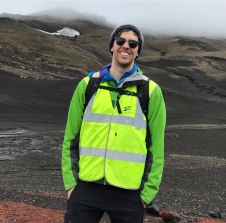Participants

Peter Barry

David Bakeart

Mike Hudak

Michael Broadley

The large concentration contrast of nitrogen (N) between Earth's atmosphere (78%) and mantle-derived materials (ppm-level) makes it a sensitive tracer for interactions between Earth's interior and exterior reservoirs. This has led to numerous studies exploiting nitrogen isotopes (δ15N) in mantle-derived fluids and rocks to address issues such as the origin of volatiles in the terrestrial mantle, reservior development and mantle mixing over Earth history, ingassing and outgassing fluxes between terrestrial reservoirs, the degassing history of Earth and the formation of Earth's atmosphere. The foundation of many of these studies is based on the interpretation of high-quality δ15N data from mantle-derived materials (i.e., oceanic basalts and mantle xenoliths), many of which contain extremely small amounts of N. However, the published oceanic basalt δ15N database remains surprising small, particularly for major tessestrial reservoirs such as the oceanic mantle. Recently, the Barry Lab has developed the analytical capability of making low-level δ15N measurements using a dedicated purification and extraction system, which is interfaced to a Nu Noblesse mass spectrometer at Woods Hole Oceanographic Institution. This system is uniquely designed for simultaneous multi-collection, which enables measurement of N-isotopes in exceedingly small samples. Key mantle-derived samples have been selected and analyzed at the Barry lab. These samples are derived from ocean islands, spreading ridge axes, and backarc basins - encompassinhg submarine basalts, mantle xenoliths and mafic crystals.